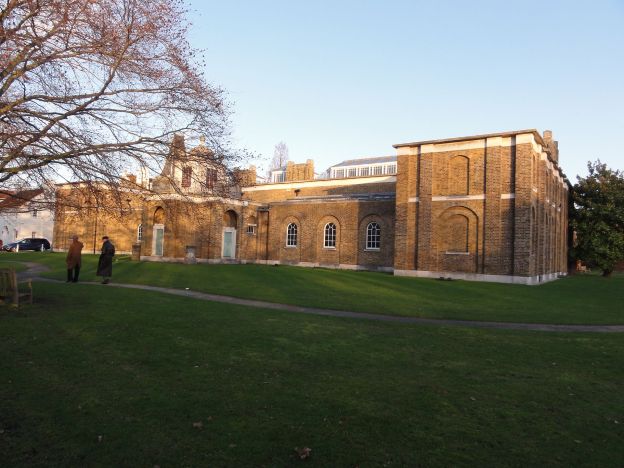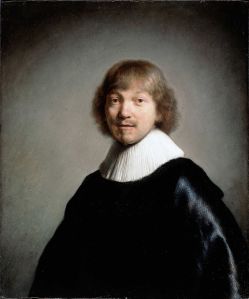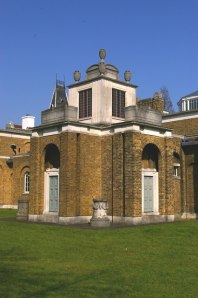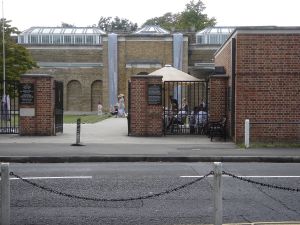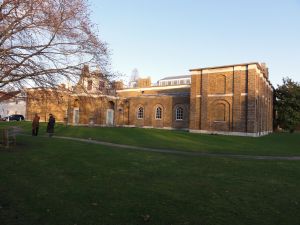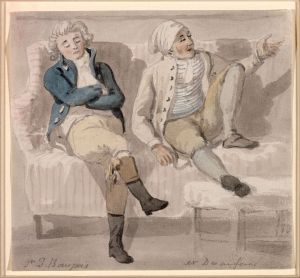Dulwich Picture Gallery is an art gallery in Dulwich, South London. The Gallery in its current form was designed by Regency architect Sir John Soane using an innovative and influential method of illumination, and was opened to the public in 1817. The building is the oldest public art gallery in England but the Gallery only recently became an independent charitable trust, established as such in 1994. Until this time the Gallery was part of Alleyn’s College of God’s Gift, a charitable foundation established by the actor, entrepreneur and philanthropist Edward Alleyn in the early seventeenth century. Due to the acquisition of artworks by its founders and bequests of varying sizes from its many patrons, Dulwich Picture Gallery houses one of the country’s finest collections of Old Masters, especially rich in French, Italian and Spanish Baroque paintings and in British portraits from Tudor times to the 19th century.
History
Early History of the Gallery
Edward Alleyn (1566–1626) began his career as an actor, and later became an entrepreneur within Elizabethan theatre. His commercial interests in the Rose and Fortune Theatres (a major competitor to the Globe Theatre), gave him sufficient wealth to acquire the Manor of Dulwich in 1605. He founded and endowed with his estate his college at Dulwich, combining a school for boys and almshouses for the local poor under the name ‘the College of God’s Gift’ i.e. Jesus Christ. The College has established what became three separate beneficiary schools – Dulwich College, Alleyn’s School, and James Allen’s Girls School, named after the Master of the College during the early eighteenth century. The original College, with its attached almshouses and chapel, survives next to the Gallery today on Gallery Road, although its exterior has undergone extensive renovation.
After his death, the College received the bequest of a collection of works from Alleyn, including a set of portraits of the Kings and Queens of England. Alleyn’s career as an actor meant that the college retained connections with the theatre and in 1686, the actor William Cartwright (1606–1686) bequeathed a collection of 239 pictures, of which 80 are now identifiable at Dulwich.
In the eighteenth century, the collection of pictures were displayed in the first floor of the wing of the Old College. The collection attracted few additions during this period, and recorded descriptions of the Gallery suggest disappointment and apathy from its visitors. The art historian and Whig politician Horace Walpole wrote that he saw “a hundred mouldy portraits among apostles sibyls and kings of England”.
Later History – Bourgeois, Desenfans and Sir John Soane
The Dulwich collection was greatly improved in size and quality of work by Sir Francis Bourgeois (1753–1811), originally from Switzerland, and his business partner, Frenchman Noël Desenfans. Their involvement saw the Gallery make significant steps towards its present state, and because of this they are credited as the founders of Dulwich Picture Gallery. The two ran a successful art dealership in London and in 1790 were commissioned by the King of The Polish–Lithuanian Commonwealth, Stanislaus Augustus, to put together a “national collection for Poland”, which the monarch thought would encourage fine arts in Poland. Desenfans had previously lobbied the British Government for the creation of a similar British National Collection, offering to contribute to it, but this idea had been at the time unenthusiastically received. Touring around Europe buying fine art, Bourgeois and Desenfans took five years to put the collection together, but by 1795 The Polish–Lithuanian Commonwealth had been partitioned — divided up by its stronger neighbours – and no longer existed.
Bourgeois and Desenfans attempted to sell the collection to other nations but were unsuccessful. Instead, they sold small pieces to fund the purchase of further important works, initially keeping the collection in Desenfans’ house in Charlotte Street near Portland Place (now Hallam Street). After the death of Desenfans in 1807, Bourgeois inherited the collection. Initially, he commissioned Sir John Soane to design and construct a mausoleum for Desenfans in the midst of the collection at the house, but was unable to secure the freehold from the property’s owners. Bourgeois therefore, bequeathed his collection to the College of God’s Gift at the reported advice of the actor John Philip Kemble, a friend of the two dealers. Stipulated in his will was the construction of a new Gallery in Dulwich, designed by Soane, in which the collection would be displayed. The will also left £2,000 for construction costs, with a further £4,000 contributed by Desenfan’s widow.
The Gallery was opened to students of the Royal Academy of Arts in 1815, two years before the official opening to the public in 1817, due to a problem with the Gallery’s heating system. It quickly became a popular site for copyists from London schools of art. Its collection was frequented by many notable cultural figures over the next hundred years, many of which first visited as students, including John Constable, William Etty, Joseph Mallord William Turner, and later in the century, Vincent van Gogh. Charles Dickens too mentions Dulwich Picture Gallery in his novel The Pickwick Papers, as Samuel Pickwick, the novel’s protagonist, is a visitor to the Gallery in his retirement.
Modern history
In the early hours of 31 December 1966 eight paintings were stolen: three by Rembrandt, A Girl at the Window, a version of Portrait of Titus and a portrait of fellow artist, Jacob de Gheyn lll (see below); three by Rubens, Three Women with a Cornucopia, St. Barbara and The Three Graces; and one, A Lady Playing on the Clavicord by Gerrit Dou and, Susannah and the Elders by Adam Elsheimer. They were worth at the time at least £3 million in total but a reward of just £1,000 was offered for their return. Nevertheless within a few days all the paintings were recovered as the result of an investigation led by Detective Superintendent Charles Hewett, who had previously investigated suspected serial killer Dr John Bodkin Adams.
Michael Hall, an unemployed ambulance driver, was the only one of the thieves caught and was sentenced to five years in prison.
Rembrandt’s small early Portrait of Jacob de Gheyn III has been stolen and recovered four times, most recently in 1983, and is listed in the Guinness Book of Records as the most frequently stolen artwork in the world. It has variously been recovered from a left-luggage office in West Germany in 1986; returned anonymously; found on the back of a bicycle; and discovered under a bench in a graveyard in nearby Streatham. The painting is now closely guarded by an upgraded security system.
In 1995 a major reorganisation of the historic Alleyn’s College charity resulted in the reconstitution of Dulwich Picture Gallery as an independent registered charity.
In 2011 the Gallery celebrated its Bicentenary year.
Donors
The Gallery attracted donors from an early age. A major addition to the collection came in 1835, when William Linley [1771–1835] — last of a musical and theatrical family, (many of whom had connections to Dulwich College) and brother-in-law to playwright Richard Sheridan — bequeathed his collection of family portraits to the gallery on his death. Among these paintings were works by Thomas Gainsborough, Archer James Oliver, James Lonsdale and Sir Thomas Lawrence.
The portraitist and Royal Academician William Beechey [1753–1839] donated the picture of the Gallery founder Bourgeois he had painted on the back of a picture by Joshua Reynolds in 1836. This added two images to the collection, though only one can be shown at a time. As of 2012, the side of the canvas on display is the one executed by Reynolds.
British portrait art became better represented due to the benefaction of Charles Fairfax Murray, a Pre-Raphaelite painter, collector and dealer. A group of forty pictures to the gallery were donated by Murray in 1911, with others following in 1915 and 1917–18.
Gallery Design
Dulwich Picture Gallery’s clear design and basic architecture of a series of interlinked rooms lit by natural light through overhead skylights has been the primary influence on art gallery design ever since. Soane designed the sky lights to illuminate the paintings indirectly, and gave us one of the great small galleries in which to look at oil paintings.
John Soane’s design is particularly significant in art gallery construction due to its lack of relation to traditional architectural practices or schools of architecture. Instead of constructing a facade with the stucco porticos favoured by many contemporary architects, Soane opted to use uninterrupted raw brick in his design, a feature that has subsequently been adopted by many modern art galleries in the 20th century. The architect Philip Johnson [1906–2005] said of the space “Soane has taught us how to display paintings”.
Before Soane settled on the final design, he proposed a number of other ideas for the new building, revolving around a quadrangle belonging to the Alleyn’s charitable foundation, to the south of the existing College buildings. These schemes proved too ambitious and in the end only the gallery was built, conceived originally as one of the wings of the quadrangle. The mausoleum too was Soane’s idea, as Bourgeois had merely indicated a desire to be buried in the College Chapel. Soane however recalled Bourgeois’ desire to construct a mausoleum in Desenfan’s home and his resultant design was axiomatic to that of the Charlotte Street house. Bourgeois and Desenfans, along with Desenfans’ wife, who died in 1815, are buried in the Gallery’s mausoleum. Alms houses constructed by Soane along the west side of the gallery were converted into exhibition space by Charles Barry, Jr. in 1880 and an eastward extension was built to designs by E S Hall between 1908 and 1938.
On 12 July 1944, during World War II, the mausoleum and west wing galleries were badly damaged by a German V1 flying bomb; apparently, the bones were scattered across the lawn in front of the gallery. The three sarcophagi in the mausoleum now once again contain approximately a skeleton each. The buildings were refurbished by Austin Vernon and Partners, and re-opened by The Queen Mother on 27 April 1953.
A modern extension designed by Rick Mather was built in 1999, adding a café, educational facilities, a lecture theatre, a new entrance and glazed walkway, and joining the building to the chapel and offices of Alleyn’s College. Parts of Soane’s original design were also restored, having been changed during previous extensions. This latest refurbishment was opened by Queen Elizabeth II on 25 May 2000.
